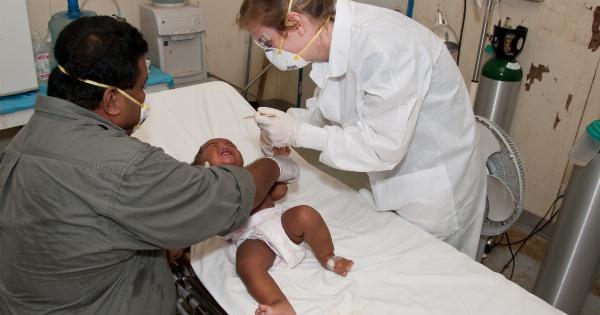Baby hemangiomas, also known as infantile hemangiomas, are a type of birthmark that appears on newborns and infants. They are usually benign and harmless, but in some cases, they can cause complications and require medical attention.
In this comprehensive guide, we will discuss everything you need to know about dealing with baby hemangiomas, including their causes, symptoms, treatments, and more.
What are Baby Hemangiomas?
Baby hemangiomas are a type of vascular birthmark that occurs when there is an abnormal growth of blood vessels in the skin.
They usually appear as bright red or purplish patches on the skin, and can vary in size from a small dot to a large, raised bump. Hemangiomas are more common in girls and premature babies, and they usually appear within the first few weeks of life.
Causes of Baby Hemangiomas
The exact cause of baby hemangiomas is unknown, but it is believed to be related to the development of the blood vessels in the skin.
It is not an inherited condition, and there are no known environmental or lifestyle factors that increase the risk of developing a hemangioma.
Some researchers believe that certain genetic mutations may play a role in the development of hemangiomas.
In addition, some studies have suggested that the use of fertility drugs or other medications during pregnancy may increase the risk of hemangiomas in the baby.
Symptoms of Baby Hemangiomas
The most common symptom of a baby hemangioma is the appearance of a red or purplish patch on the skin. Other symptoms may include:.
- Raised, firm, or rubbery texture of the skin
- A bluish tint to the skin
- Small, bright red bumps on the surface of the hemangioma
- Ulceration or bleeding in severe cases
Types of Baby Hemangiomas
There are two main types of baby hemangiomas:.
- Superficial Hemangiomas: These are located in the top layers of skin and appear flat and bright red. They usually grow quickly during the first 6 to 9 months of life, and then begin to shrink over the next few years.
- Deep Hemangiomas: These are located in the deeper layers of skin and appear blue or purple. They may not be noticeable at birth, but they can grow rapidly during the first few months of life. Deep hemangiomas may continue to grow until the child is approximately 12 months old, and then they begin to slowly shrink over the next few years.
When to Seek Medical Attention
Most baby hemangiomas do not require medical treatment, as they will eventually disappear on their own over time. However, you should seek medical attention if:.
- The hemangioma obstructs a vital structure, such as the airway or the eye
- The hemangioma causes bleeding or ulceration
- The hemangioma develops rapidly or appears very large
- The hemangioma is located on the lip or in the diaper area
Treatments for Baby Hemangiomas
There are a variety of treatments for baby hemangiomas, depending on the size and location of the birthmark. Some common treatments include:.
- Watchful waiting: Many hemangiomas will shrink and disappear on their own without any treatment.
- Corticosteroid medications: These medications can be injected into the hemangioma or given orally to help shrink the birthmark.
- Propranolol: This medication is usually used to treat high blood pressure, but it has been found to be effective in treating some types of hemangiomas.
- Laser therapy: Laser therapy can be used to remove or shrink the birthmark.
- Surgery: In rare cases, surgery may be necessary to remove a hemangioma that is causing problems.
Preventing Complications
Most baby hemangiomas do not cause complications, but in some cases, the birthmark can cause problems such as obstruction of the airway or vision impairment.
To prevent complications, it is important to monitor the hemangioma closely and seek medical attention if there are any changes in size, color, or texture.
Caring for Your Baby’s Hemangioma
If your baby has a hemangioma, there are some things you can do to care for the birthmark:.
- Keep the area clean and dry to prevent infection.
- Avoid picking or scratching at the hemangioma, as this can cause bleeding and scarring.
- Dress your baby in loose clothing that does not rub against the birthmark.
- Avoid exposing the hemangioma to direct sunlight, as this can cause the birthmark to become darker and more noticeable.
Conclusion
Baby hemangiomas are a common type of birthmark that usually do not cause any problems. However, in some cases, they can require medical treatment to prevent complications.
With careful monitoring and appropriate treatment, most baby hemangiomas will eventually disappear on their own, leaving little or no trace behind. If you have any concerns about your baby’s hemangioma, be sure to consult with your pediatrician or a dermatologist.




























